One easy way to immerse oneself in Italian culture is through the consumption of Italian cinema. The prolific, innumerable array of theatres in Rome is a testament to the importance of cinema in Italian history.
A relatively young country (having only been unified in 1861), Italy was for a long time divided geographically by dialects. Audio-visual mediums subsequently played a big role in uniting Italy both linguistically and culturally. In particular, cinema—an art form designed for and distributed to the masses—prevailed as a tool for bringing together the Italian people, defining the nation state in broader terms than the individual villages in which most Italians lived.
Today, cinema remains a big part of the Italian culture. There are a variety of opportunities to watch films in both the Cornell in Rome Palazzo and in the city of Rome itself:
I. Every Tuesday night at 21:00, films are projected in the lecture hall of the Cornell in Rome Palazzo.
At the first screening last Tuesday, students watched Nuovo Cinema Paradiso (Giuseppe Tornatore, 1988), the story of a young boy’s fascination with the cinema as the hub of activity in his remote Italian village. The film was a telling introduction to the role of cinema in Italian culture itself; while the theatre is at first overseen and censored by a Catholic priest, it is later overhauled and renovated by a local entrepreneur. As the theatre’s audience and aesthetics change, so does protagonist Toto’s relationship to the cinema art form, growing from a devious young cinephile to a professional filmmaker.
Future screenings include a variety of recent titles that examine both modern Italian life and the rich history of the country:
09-06: Pane e Tulipani (Silvio Soldini, 1999)
09-13: I Vitelloni (Federico Fellini, 1953)
09-27: Romanzo Criminale (Michele Placido, 2005)
10-04: La Vita e Bella (Roberto Begnini, 1997)
10-18: Quo Vadis Baby? (Gabriele Salvatores, 2005)
10-25: La Notte de San Lorenzo (Paolo Taviani & Vittorio Taviani, 1982)
11-01: Il Ladro di Bambini (Gianni Amelio, 1992)
11-08: Io Non Ho Paura (Gabrilele Salvatores, 2003)
11-15: I Cento Passi (Marco Tullio Giordana, 2000)
11-22: Tano da Morire (Roberta Torre, 1997)
II. Due to the popularity of the 1 credit Italian cinema seminar that has long been a staple of the Cornell in Rome program, a full 4 credit Italian Cinema course “Italian Cinema on City Streets and Side Roads” is now taught by Carolina Ciampaglia.
In the course, students watch a new film each week, learn about the historical background of the film through readings and lectures, and then analyze and discuss the film.
Films to be viewed by the Italian Cinema class cover a broader breadth of time and more chronological path then the Tuesday Palazzo screenings, focusing on specific eras of Italian cinema and their respective cultural landscapes.
08-24: Ladri di Biciclette (Vittorio De Sica, 1948 )
08-31: Paisà (Robert Rossellini, 1946)
09-07: La strada (Federico Fellini, 1954)
09-14: I soliti ignoti (Mario Monicelli, 1958)
09-28: Rocco e i suoi Fratelli (Luchino Visconti, 1960)
10-05: Accattone (Pier Paolo Pasolini 1961)
10-19: Deserto Rosso/Red Desert (Michelangelo Antonioni, 1964)
10-26: Film d’amore e d’anarchia (Lina Wertmuller, 1973)
11-02: Caro Diario (Nanni Moretti, 1994 )
11-09: Lamerica (Gianni Amelio, 1994)
11-16: Pane e tulipani (Silvio Soldini, 2000)
11-23: Gomorra (Matteo Garrone, 2008)
11-30: Questioni di Cuore (Francesca Archibugi, 2009)
III. Notable Cinemas in Rome
For the most part, going to see a film is much cheaper in Italy than in the States, ranging from 3.00-6.00€. Rome is filled with cinemas, but here are some of the most enjoyable and relevant for American students.
1. L’Isola del Cinema—This outdoor cinema looks out onto the Tiber River from the Isola Tiberina, providing a pleasant breeze during the hot Roman nights. Films are shown on three screens: new releases are screened on the large outdoor Arena screen, independent and classic films are shown in the Cine Lab tent, and free screenings of shorter, more experimental work can be viewed on the small outdoor Tiber Screen. For more information, visit isoladelcinema.com.
2. Warner Village—If you are looking for a more American cinema experience, Warner Village shows films in the comfort of an air-conditioned, five-screen multiplex (opportunely situated next to a McDonald’s). The theatre has one screen devoted to English-language films and is conveniently located near Termini Train Station on Piazza della Repubblica.
3. The Alcazar—Because the Alcazar is a small, one-screen theatre, its selection of films is limited. Nonetheless, it is a convenient place to watch English-language films (which are screened every Monday) as it is located near the Cornell apartments in Trastevere.
4. Cinema Teatro Farnese—Located on Campo de’ Fiori, this cinema has a variety of commercial and independent releases, as well as special screenings and events. Another plus is the cinema’s well-maintained and rather informative website: http://www.cinemafarnese.it/.
IV. One of Rome little known treasures in the Cinecittà (“Cinema City”), one of the world’s biggest film and television production facilities outside of Hollywood.
Designed by fascist architect Gino Peressutti under the direction of Benito Mussolini, the facility is one of Rome’s best examples of modernist architecture.
Since its opening in 1937, Cinecittà has been the backlot for a variety of well-known films including Roman Holiday (William Wyler, 1953), Ben Hur (William Wyler, 1959), Cleopatra (Joseph L. Mankiewicz, 1963), and La Dolce Vita (Federico Fellini, 1960). More recently, the studio has been used for the production of The Life Aquatic (Wes Anderson, 2002), The Passion of the Christ (Mel Gibson, 2004), and HBO’s “Rome” (Michael Apted, 2005-2007).
Visitors can see the inside of Cinecittà for the exhibition “Cinecittà Shows Off”, open until November 30th. Tours of the facility can also be arranged by appointment for groups of 20 people or more.
V. Lastly, the Cornell in Rome office has an extensive library of Italian films and American films set in Italy.
Viva il cinema!

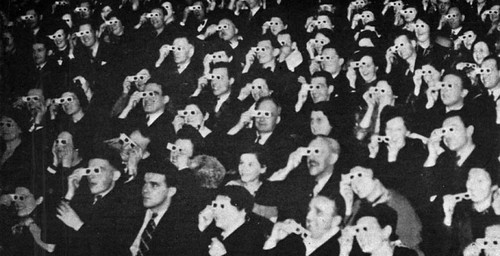
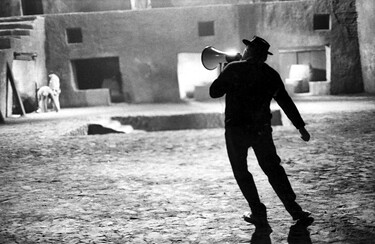
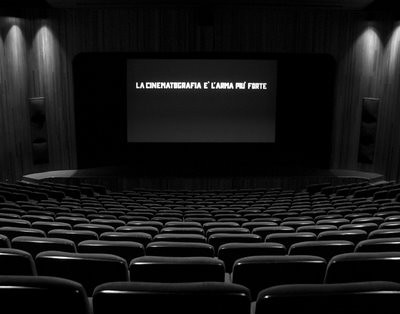
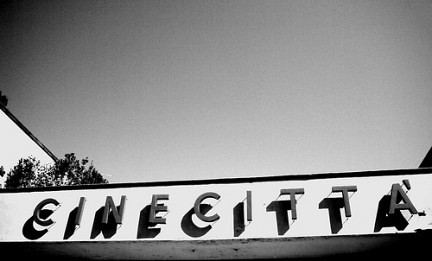
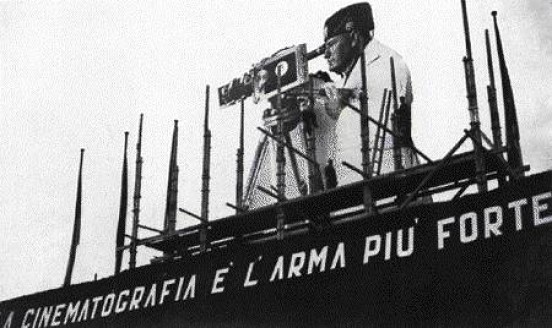
Good stuff Katie! Do the cinemas in Rome offer English subtitles? I hope!